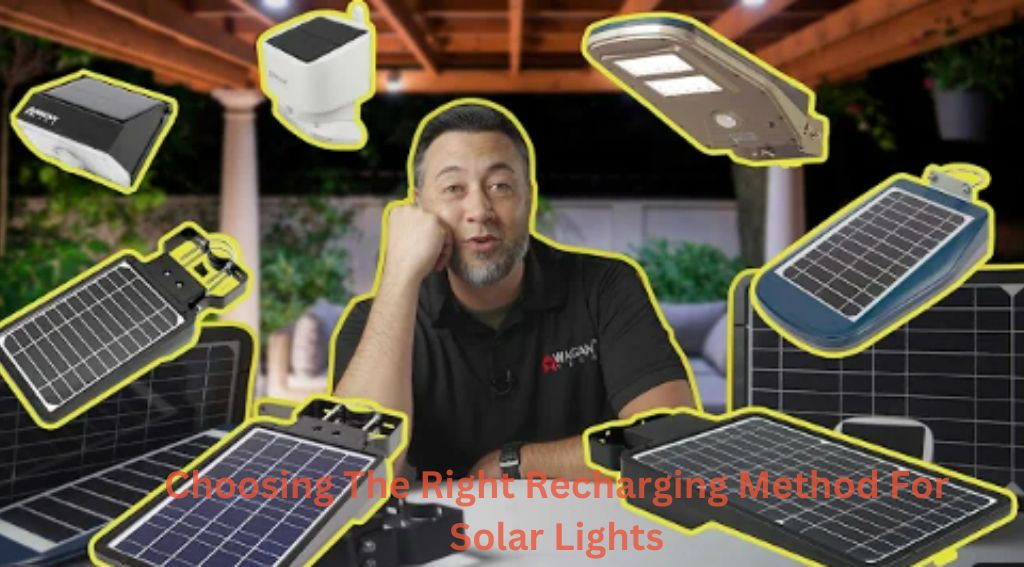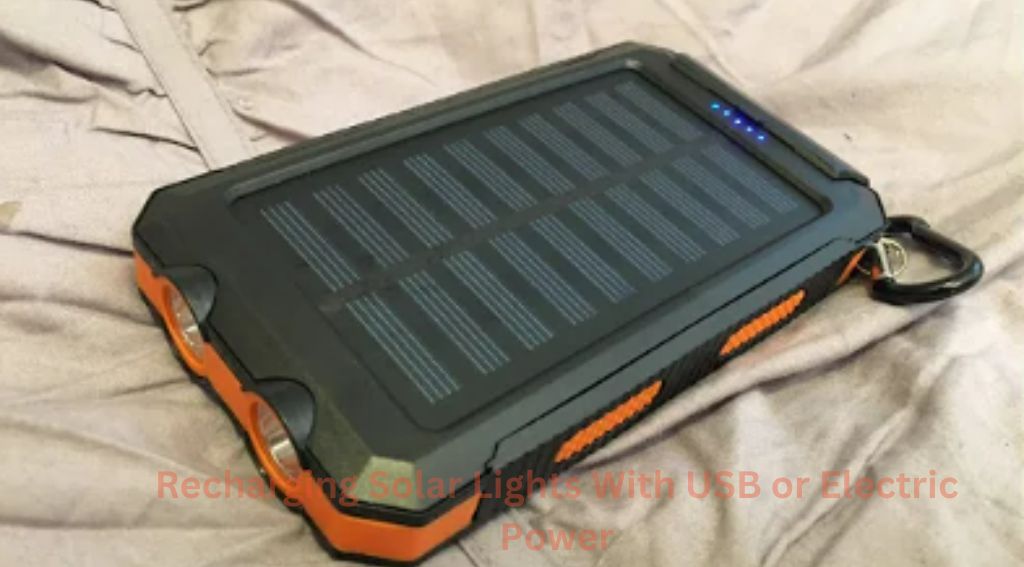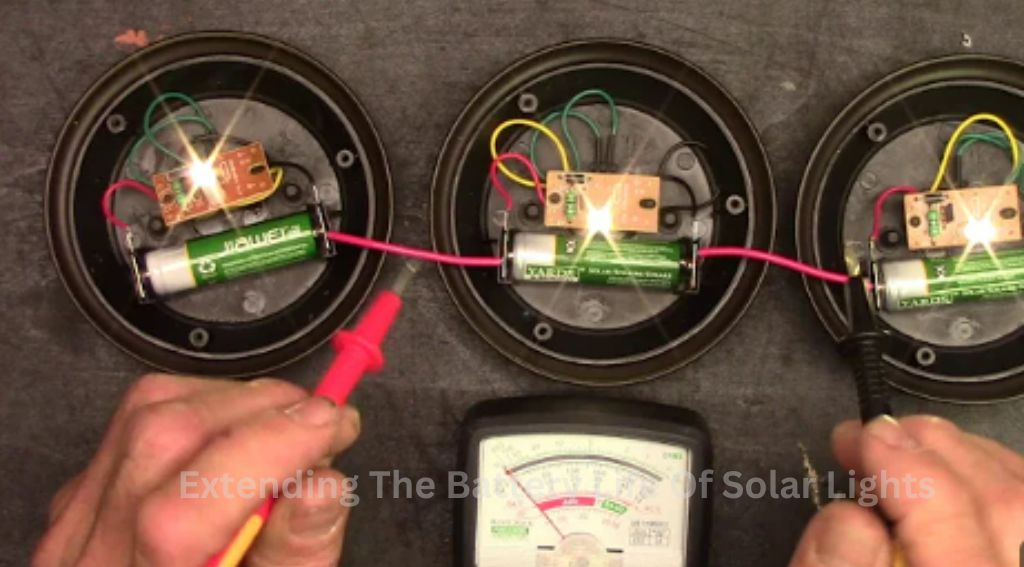How to Recharge Solar Lights: Ultimate Guide for a Sustainable Energy Source
To recharge solar lights, simply place them in direct sunlight for several hours, allowing the solar panels to absorb energy and charge the batteries. Solar lights are an energy-efficient and eco-friendly lighting option that harnesses the sun’s power to illuminate outdoor spaces.
They are easy to install, require minimal maintenance, and can provide a soft, ambient glow to enhance the aesthetics of your garden or patio. However, over time, the batteries of solar lights may become depleted and require recharging to continue functioning optimally.
Fortunately, recharging solar lights is a straightforward process that only requires a few hours of direct sunlight. the solar panels to soak up sunlight and convert it into stored energy to recharge the batteries. We will explore the steps to effectively recharge solar lights and ensure they remain a reliable source of illumination.
Understanding Solar Lights And Their Recharging Mechanism
Solar lights are an eco-friendly and cost-effective way to illuminate outdoor spaces. By harnessing the power of the sun, these lights eliminate the need for complicated electrical wiring and ongoing electricity costs. Understanding how solar lights work and the importance of recharging them is crucial to ensuring their optimal performance.
How do solar lights work?
Solar lights rely on photovoltaic cells to convert sunlight into electrical energy. These cells, typically made of silicon, absorb sunlight during the day and convert it into direct current (DC) electricity. The DC electricity is then stored in a rechargeable battery, usually a nickel-metal hydride (NiMH) or lithium-ion battery, for later use. When the sun sets, the solar light’s internal circuitry automatically switches on, and the stored energy powers the light source, which may be LED or CFL bulbs.
Components Of A Solar Light System
A typical solar light system consists of several essential components:
- Solar panel: This component captures sunlight and converts it into electricity. The size and quality of the solar panel directly affect the efficiency of the solar light.
- Rechargeable battery: The rechargeable battery stores the converted energy and powers the light source during the night. It is important to choose a high-quality battery that can hold a charge for a longer duration.
- Light source: The light source, whether LED or CFL bulbs, illuminates the surroundings when the sun goes down. LED bulbs are preferred for their energy efficiency and durability.
- Controller: The controller regulates the flow of electricity from the solar panel to the battery, preventing overcharging or over-discharging. It also controls the automatic switching on and off of the light.
Importance Of Recharging Solar Lights
Regularly recharging solar lights is crucial to ensuring their longevity and performance. Here’s why:
- Optimal performance: Recharging the solar lights helps maintain their efficiency and ensures they can provide sufficient lighting throughout the night. A fully charged battery allows the lights to operate at their brightest.
- Extended lifespan: When solar lights are not recharged properly or left without charging for extended periods, it can lead to battery degradation. Regular recharging helps prevent irreversible damage to the battery and prolongs the lifespan of the solar lights.
- Reliable illumination: Adequately recharged solar lights ensure consistent illumination in the outdoor area, providing enhanced safety and security. Dim or flickering lights may pose hazards and compromise the intended purpose of the illumination.
By understanding how solar lights work and the importance of recharging them regularly, you can maximize their efficiency, longevity, and overall performance. To ensure optimal operation, it is recommended to follow the manufacturer’s guidelines for recharging frequency and duration.
Choosing The Right Recharging Method For Solar Lights

When it comes to recharging your solar lights, it’s important to choose the right method to ensure their optimal performance. Assessing the available recharging options, considering the pros and cons of each method, and understanding the factors to consider in the selection process are key to making an informed choice.
Factors To Consider When Selecting A Recharging Method
- Location: Consider the availability of direct sunlight and the presence of shaded areas where indirect sunlight could be a viable option.
- Weather conditions: Evaluate the extent to which weather patterns might affect the recharging process and choose a method that suits your location’s climate.
- Convenience: Determine whether you prefer the convenience of direct sunlight or the flexibility of alternative recharging methods like solar chargers or USB charging.
- Duration of use: If you require more extended hours of illumination, a method like USB charging may be more suitable.
- Cost: Take into account the additional costs associated with purchasing a solar charger or using USB charging, and weigh it against the benefits they provide.
Recharging Solar Lights Using Solar Energy
One of the key advantages of solar-powered lights is their ability to recharge using sunlight. By harnessing the power of the sun, you can ensure a sustainable and eco-friendly source of energy for your solar lights. In this article, we will explore various methods and tips for effectively recharging solar lights using solar energy.
Maximizing Sun Exposure For Efficient Recharging
To ensure efficient recharging of your solar lights, it is crucial to maximize their exposure to sunlight. Here are a few tips to help you make the most of the available sunlight:
- Place your solar lights in areas that receive direct sunlight for several hours a day. Avoid shaded or obstructed locations that may hinder the charging process.
- Position the solar panels of your lights in the south or west direction, as these typically receive the most sunlight throughout the day.
- Clean the solar panels regularly (we will dive into this in detail later) to remove any dirt, dust, or debris that may hinder their ability to absorb sunlight.
Tips For Positioning Solar Lights Effectively
The placement of your solar lights plays a crucial role in their ability to recharge effectively. Here are some tips to position your solar lights for optimal sunlight exposure:
- Make sure not to place your solar lights in areas that frequently receive shade from trees, buildings, or other structures.
- Consider the angle and position of the solar panels. Tilting the panels at an angle that aligns with the latitude of your location can maximize their exposure to the sun.
- For landscape or garden solar lights, position them strategically along pathways or in areas that allow them to receive ample sunlight during the day.
Maintaining And Cleaning Solar Panels For Optimal Performance
Maintaining and cleaning the solar panels of your solar lights is essential to ensuring their optimal performance. Regular cleaning can help remove any dirt, grime, or debris that might obstruct sunlight absorption. Here’s how you can keep your solar panels clean:
- Gently wipe the surface of the panels using a soft cloth or sponge.
- Use a solution of mild soap and water to remove stubborn stains or dirt.
- Rinse the panels thoroughly with clean water and allow them to dry before reassembling the lights.
- Regularly inspect the panels for any signs of damage or wear. Replace any panels that are cracked or broken to maintain optimal performance.
Managing Cloudy Or Low-sunlight Conditions
Despite their reliance on sunlight, solar lights can still function to some extent during cloudy or low-sunlight conditions. Here are a few tips to help you manage such situations:
- Make sure the solar panels are clean and free from any obstructions. This allows them to capture the available sunlight more efficiently.
- Consider using solar lights with larger panels or higher-capacity batteries, as they can store more energy to compensate for reduced sunlight.
- If prolonged cloudy conditions are expected, you may also consider investing in solar lights with backup battery systems or alternate charging options. This ensures continuous lighting even when sunlight is limited.
By following these tips and employing effective strategies, you can ensure that your solar lights recharge efficiently using solar energy. Not only will this help you save on electricity costs, but it will also contribute to a greener and more sustainable environment.
Recharging Solar Lights With USB or Electric Power

When it comes to recharging solar lights, utilizing USB or electric power is a convenient option. This method not only ensures quicker recharging but also offers a reliable backup when sunlight is limited. In this article, we will explore the steps to recharge solar lights using USB or electric power, recommended power sources and charging devices, as well as safety precautions to keep in mind.
Utilizing USB Charging For Quicker Recharging
Recharging solar lights with a USB connection is a simple and efficient method. It allows you to replenish the battery even when sunlight is scarce. By following these steps, you can ensure that your solar lights are always ready to shine:
- Locate the USB charging port on your solar light. It is usually found on the back or bottom of the light.
- Connect one end of the USB cable to the charging port of the solar light.
- Plug the other end of the USB cable into a power source, such as a laptop, power bank, or USB wall adapter.
- Ensure that the power source is turned on and provides sufficient power.
- Allow the solar light to charge for the recommended duration, which is usually mentioned in the user manual. It is important not to overcharge the battery.
- Once fully charged, disconnect the USB cable from both the solar light and the power source.
Recommended Power Sources And Charging Devices
When recharging solar lights using USB or electric power, it is essential to use reliable power sources and compatible charging devices. Here are a few options to consider:
| Power Sources | Charging Devices |
| USB wall adapter | Portable power banks |
| Laptop or computer | Solar-powered chargers |
| Car charger | Outdoor power outlets |
Safety Precautions When Using Electrical Recharging Methods
While USB or electric power offers convenience, it is crucial to prioritize safety when recharging solar lights. Keep the following precautions in mind:
- Ensure that the USB cable and charging devices are in good condition, with no exposed wires or damage.
- Avoid overcharging the solar lights, as it may shorten the battery’s lifespan.
- Do not leave the solar lights unattended while charging.
- To prevent any harm to the solar lights, only use the charging devices and power sources that the manufacturer recommends.
- If using outdoor power outlets, ensure they are weatherproof and protected from water or other elements.
- Disconnect the USB cable or unplug the power source once the solar lights are fully charged.
By following these steps and precautions, you can easily recharge your solar lights using USB or electric power, ensuring they are always powered up and ready to light up your space.
Extending The Battery Life Of Solar Lights

Solar lights are a great way to bring illumination to your outdoor spaces, all while reducing your carbon footprint and saving money on electricity. However, the effectiveness of solar lights relies on the health and longevity of their batteries. To ensure your solar lights keep shining bright, it’s important to take steps to extend their battery life. By following a few simple tips for prolonging battery life, practicing regular maintenance and cleaning, and knowing when to replace the batteries, you can ensure your solar lights stay illuminated for years to come.
Tips For Prolonging Battery Life
- 1. Positioning: Properly position your solar lights in areas where they receive maximum sunlight exposure. This helps the solar panels gather as much energy as possible, ensuring efficient charging of the batteries.
- 2. Switch off: If you don’t require the lights for an extended period, such as during the day or when you’re away on vacation, consider switching them off. This helps to conserve battery power when it’s not needed.
- 3. Clean the solar panels: Dust, dirt, and debris can hinder the absorption of sunlight by the solar panels. Regularly clean the panels with a soft cloth or sponge to ensure optimal performance.
- 4. Shade avoidance: Avoid placing your solar lights in shaded areas, as this can negatively impact their ability to charge and drain the batteries. Keep them away from overhanging trees or structures that may cast shadows.
Regular Maintenance And Cleaning Practices
Maintaining your solar lights is essential to keeping them running efficiently. A few simple steps can help ensure their longevity:
- 1. Trimming vegetation: Regularly trim any overgrown plants or branches that may obstruct the sunlight from reaching the solar panels. This promotes uninterrupted charging and prevents shading.
- 2. Cleaning the lights: Along with cleaning the solar panels, regularly wipe down the lights themselves with a damp cloth to remove dust and grime. This not only improves their appearance but also helps prevent corrosion.
- 3. Checking connections: Periodically inspect the connections between the solar panel, battery, and LED lights. Ensure they are secure and free from any corrosion or damage.
Battery Replacement Guidelines For Optimum Performance
Over time, the batteries in solar lights will naturally degrade and become less efficient at holding a charge. By following these guidelines for battery replacement, you can ensure optimal performance:
- Check battery lifespan: Consult the manufacturer’s instructions or website to determine the expected lifespan of your solar light batteries. This will give you a general idea of when to consider replacing them.
- Observe decreased performance: If you notice a significant decrease in the brightness or duration of your solar lights, it may be a sign that the batteries need replacing. Keep an eye out for any flickering lights or inconsistent performance.
- Choose quality replacements: When replacing the batteries, opt for high-quality rechargeable batteries specifically designed for solar lights. This ensures compatibility and maximizes the longevity of your solar lights.
- Follow correct installation: Solar Install the new batteries correctly, following the manufacturer’s instructions. Improper installation can prevent proper charging and affect the overall performance of the lights.
Frequently Asked Questions On How To Recharge Solar Lights
Is There Another Way To Charge Solar Lights?
Solar lights can be charged in other ways.
Can Solar Light Batteries Be Recharged?
Yes, solar light batteries can be recharged. They store energy from the sun and can be recharged during the day. This allows the batteries to provide power for the solar lights during the night. Recharging them is easy and helps extend their lifespan.
Do Solar Lights Need Direct Sunlight To Recharge?
Solar lights do require direct sunlight to recharge their batteries. Without direct sunlight, they may not be able to generate enough energy to charge and power the lights effectively.
How Much Sun Does It Take To Charge Solar Lights?
Solar lights typically require around 6-8 hours of direct sunlight to fully charge.
Conclusion
Keeping your solar lights recharged is essential for optimal performance. By following these simple steps, you can prolong the lifespan of your solar lights and ensure they provide bright, efficient illumination at all times. Remember to regularly clean the solar panels, replace the rechargeable batteries when necessary, and position the lights in direct sunlight.
With these maintenance tips, you can enjoy the benefits of eco-friendly and cost-effective lighting for years to come.




